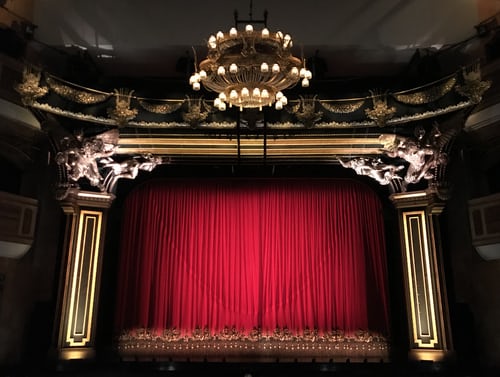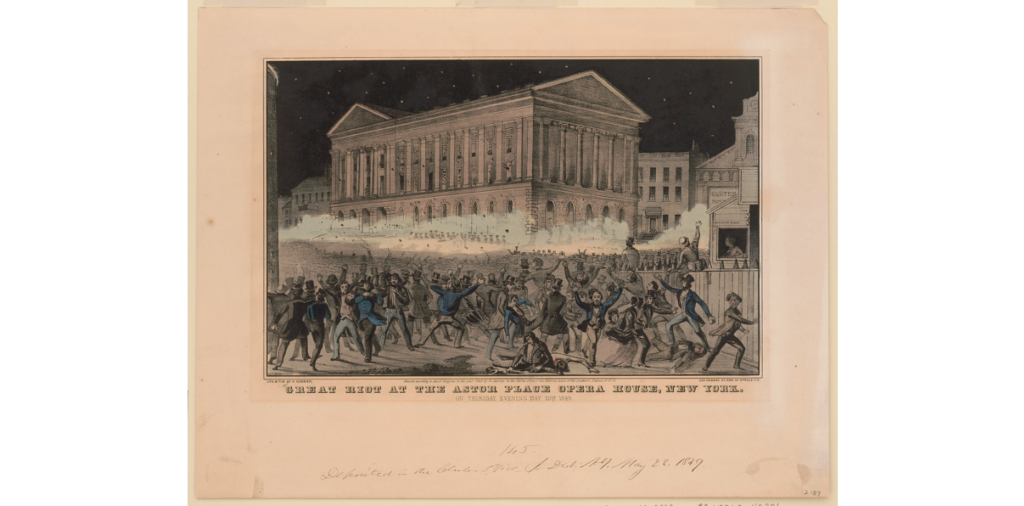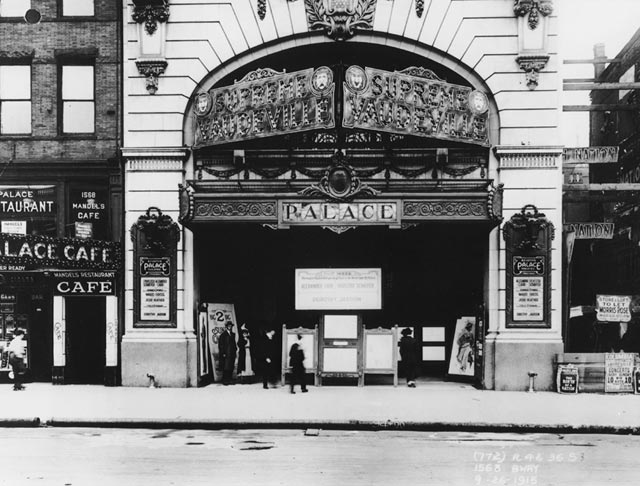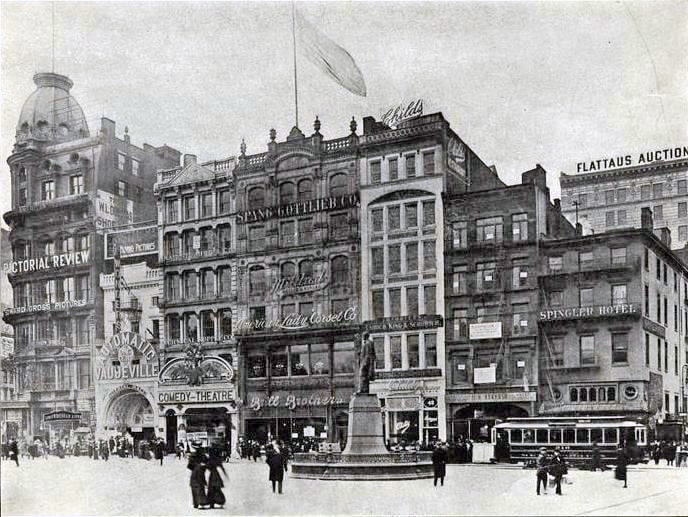
The Curtain Rises on Broadway
Broadway is a main artery of New York life-the hardened artery. Walter Winchell
Broadway is known as the “Great White Way.” The place where performers hope that what they want more than anything will really come true – “If you can make it here you can make it anywhere.” Each year hundreds of wanna be actors and actresses come to New York with one big dream, to become the next famous, the next celebrated person on Broadway. All the greats started on Broadway performing such great plays as Hamlet, The Phantom of the Opera, Les Misérables. Actors such as James Cagney, Angela Lansbury, Sarah Jessica Parker, Viola Davis, Taye Diggs, and Morgan Freeman, just to name a few. It seems for many if you want to be in movies you usually will start in plays on broadway.
These performers work very hard, very long hours to put on a performance that will leave a lasting impression on the audience. People will sometimes be so moved by the show that they come back many more times just to see it again.
I have never been to see a Broadway show but I have been to other theaters, and can say there is nothing , not even a movie, that can thrill you like a live performance. So with this being said, let’s’ take a journey back to where it all began, quiet down, the lights are dimmed and “The Curtain Rises on Broadway.”

The roots of Broadway theaters goes all the way back to the 1700’s in New York City. There were two men, Thomas Kean, and Walter Murray, who were performers, who would be one of the first to open a company on the street we now know as “The Financial District” of New York. They had a reputation for putting on Shakespearean plays and Operas. The building they used was a 2 story wooden structure that held around 280 people. They performed 2 plays in that building, one of them thought to be the first musical play in New York: John Gay’s The Beggar’s Opera.
The plays did well and Kean and Murray made many improvements to the inside of the structure, they made boxes along the side walls to add seating and for the elite.
During the Revolutionary War, all theater ceased, but was resumed in 1798.
Bigger Theaters and Longer Performances
When the war was over a brand new theater was built on Chatham Street,[now called Park Row] that contained 2000 seats, and they called it the Park Theater. It had a fifty year run before closing down. All kinds of performances were put on in this theater, and all types of people, came to see them. Each class had it’s own part of the theater, working men in the pit, upper class and women in the boxes, and prostitutes, lower class men, and blacks in the balcony. From then on new theaters started to pop up everywhere. The original circus man P.T.Barnum even had a hand in theater, by operating an entertainment complex in lower Manhattan. In 1844, Palmo’s Opera House opened and played for 4 seasons before it closed.
Broadways Astor Opera House
Now at this time in 1847, some wealthy upper elite patrons opened the Astor Opera House, at the intersection of Astor Place and Broadway. It was made to cater to the very best of New York, and provide some of the best productions of the period.
The theater had the feeling that it was a substitute for a general drawing room – a refined attraction which the ill mannered would not be likely to frequent, and around which the higher classes might gather, for the easier interchange of courtesies, and for that closer view which aides the candidacy of acquaintance.
The interior of the theater was also set to a grander appearance by having upholstered seats, and two tiers of boxes, all by subscription only. There were 500 general admission tickets where patrons would be seated on benches in the “cocklift”,[ a place like an attic,] and was reachable only by a very narrow stairway, so they would be separated from the upper crust. There was also a well enforced dress code that comprised of having a freshly shaven face, evening dress, and kid gloves. If you did not come to the show with all three of these, the door was closed to you.
One of the shows being performed at the Astor Place Theater was the Shakespearean play Macbeth. While this was a great play, the program would somehow be the cause of 22 deaths, and over 100 people injured. Two men would be at the root of the riot that would shake New York society. American actor Edwin Forrest, who had a forceful, powerful, persona when performing, was the working mans actor. Forrest was a rival to British actor William Macready who had a more restrained acting persona. He was the choice of the elite.
On May 10, 1849 the working class supporters of Forrest, numbered into the thousands descended upon a planned performance of Macready in Macbeth at the Astor Place Opera House. The riot soon blew up into a very serious battle and they had to call in the state militia to use their weapons. It resulted in many deaths, and serious injuries. While this was unfolding outside, Macready was on stage struggling to finish is role in Macbeth, and later departed America never to do theater there again.

Some look upon the riot as less about who performs a play better, and as many of the newspapers of the day stated, its’s more about “the rich vs the poor.” If you would like to read the actual articles about the riots in the newspapers of the day, go to the Library of Congress website at: www.loc.gov and click on the digital collections and you pull up the newspapers in New York, and type Astor Place Opera House Riot, it’s a fascinating read.
Broadway Through the Rest of the Century
Broadway’s musical called The Elves, opened on March 16, 1857, ran for 50 performances, making it at the time, the longest running musical in theater. It closed on May 6, 1857.
In 1866, a musical, as we think of them today was entitled The Black Crook. The show gave 474 performances, and it’s length was five and a half hours long.
Union Square was rapidly becoming the heart of Broadway in 1870 and by 1899 a new sort of theater was showing up on the scene. Vaudeville shows were becoming the new rage on Broadway. The Victoria Theater was one of the first to implement a show that had, some comedy, dancing, singing, and storytellers all in one show. As you can see in the middle picture below it had many patrons wanting to see the show.



Transportation at the time was mainly walking, or buggies, so if you lived out of town or on the far side of New York, getting to a show was difficult. So with transportation improving, poverty slowly improving, and street lights on the rise, travel was getting better and more and more patrons were making their way to the numerous theaters popping up all along Broadway. With more customers, theaters could run plays longer, which gave them better profits,and really improved production values. It wasn’t just New Yorkers coming for the shows, people were traveling from outside the state, to see the famous actors, and acclaimed plays. Along with the growing crowds and theaters, a group called the Theatrical Syndicate, run by partners Marc Klaw and A.L. Erlanger was formed. They controlled almost every single legitimate theater in the U.S. for the next 16 years. Will this be a benefit to Broadway or just a controlling force? A new century was on the way and changes will come, and involve a group of brothers that will challenge the syndicate, and become the new force that is still in power today.
Follow my blog to next week, for the ending of this revolving story and as Terrence Mann said: “Movies will make you famous; television will make you rich ,but theater will make you good.”
Till next week………………….
